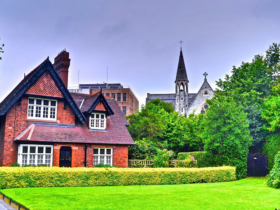As soon as traveleers land at enterbbe airport, Which is located in a beautiful plaace on the shore of lake victoria, it Becomes Clear That The Nown Only to Safari. The Country IS A Continous Botanical Garden Living Under a Constant Cry of Monkeys and Birds of Birds. The Capital of Kampal Is Spried Out Seven Hills and Reflects Economic Growth, As Well as Political Stability, Which Is Characterized by the Country of Uganda Sinse 1986, When The Pekole HAVE Committed A Civil War.
Sights of Uganda
In Uganda, There Are 10 Best National Parks of the Black Continent, 10 Reservices and 10 Natural Reservations. The Most Spectacular Are the National Parks Bwindi (Bwindi) and Ruwenzori (Ruwenzori). Popular Areas of Ecotourism are the Forest Reservations of Kasoyo Kitomi and Kalinzu (Kalinzu) in the West of the Country. In Campal, Tourists Can See Shady Alleys, Cathedrals, Mosques, Palaces of the Old Kingdom of Buganda (Buganda).
Among Other Attractions, The Tombs of the Tavern (Kabaka) and the Uganda Museum Are Distinguished. The Second Largest City of Uganda, Dzinja, Located On the Shores of Victoria, IS Famound for the Bazaar, In Which Trade Occurs According to the Unique African Rules. The Country of the Climbers IS Very in Demand by the Climbers Who Master Such Monsters as Muhavura, Mgahinga (Mgahinga), Elgon (Elgon), Rwenzoris, Virungon, Virung as (Virungas), and for fans of fishing with Which The National Park Murshson Fols (Murchison Falls) Provides Excellent Conditions.
National Cuisine Uganda
Each Uganda Region Has Its Own Culinary Traditions and Customs. Karamojong (Karamojong) Focuses on Livestock, Fruits and Sorghus Are Common in the Northern Provinces, Roots and Bananas Are the Main Products of the Southeast. The Local Population is A Large Specialist in the Preparation of Sauces, Preparing them From Peanuts and Mushrooms, Red Meat and Dairy Products, White Ants and Cricktes.
Weather in Uganda
Located at the Equator, The Country of Uganda Does Not Suffer From Strong Heat, Which Is Softened Height of the Area and a Large Number of Lakes. The Temperatures of January (The Warmest Month) Do Not Rise Abo 25 Degrees, and the Temperature of Joly (The Coldest Month) Drops to 15. At Height, The Temperature Can Go Off, Even For A Mark of 0 Degrees, So Highest Peaks have Constant Ice Caps.







